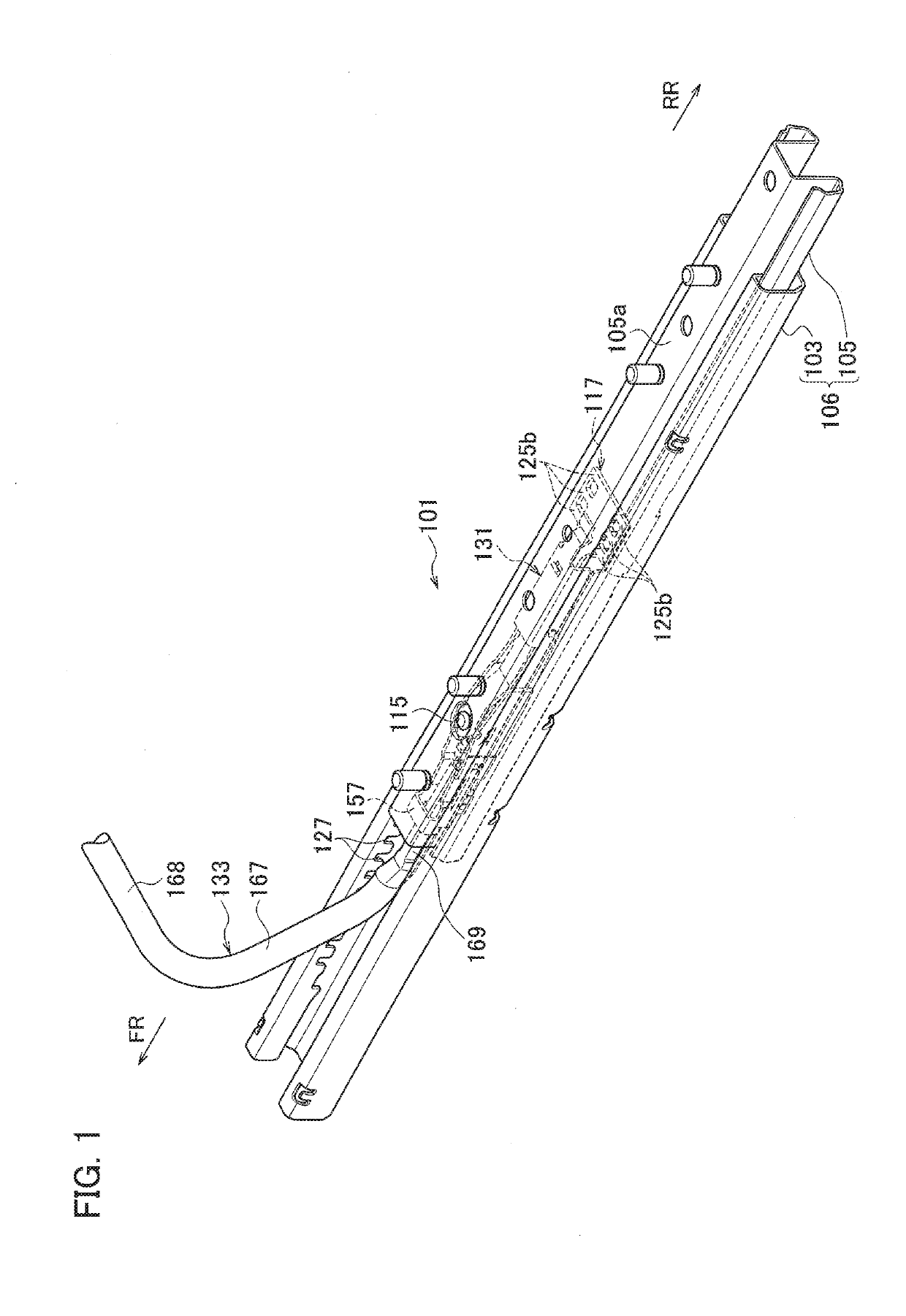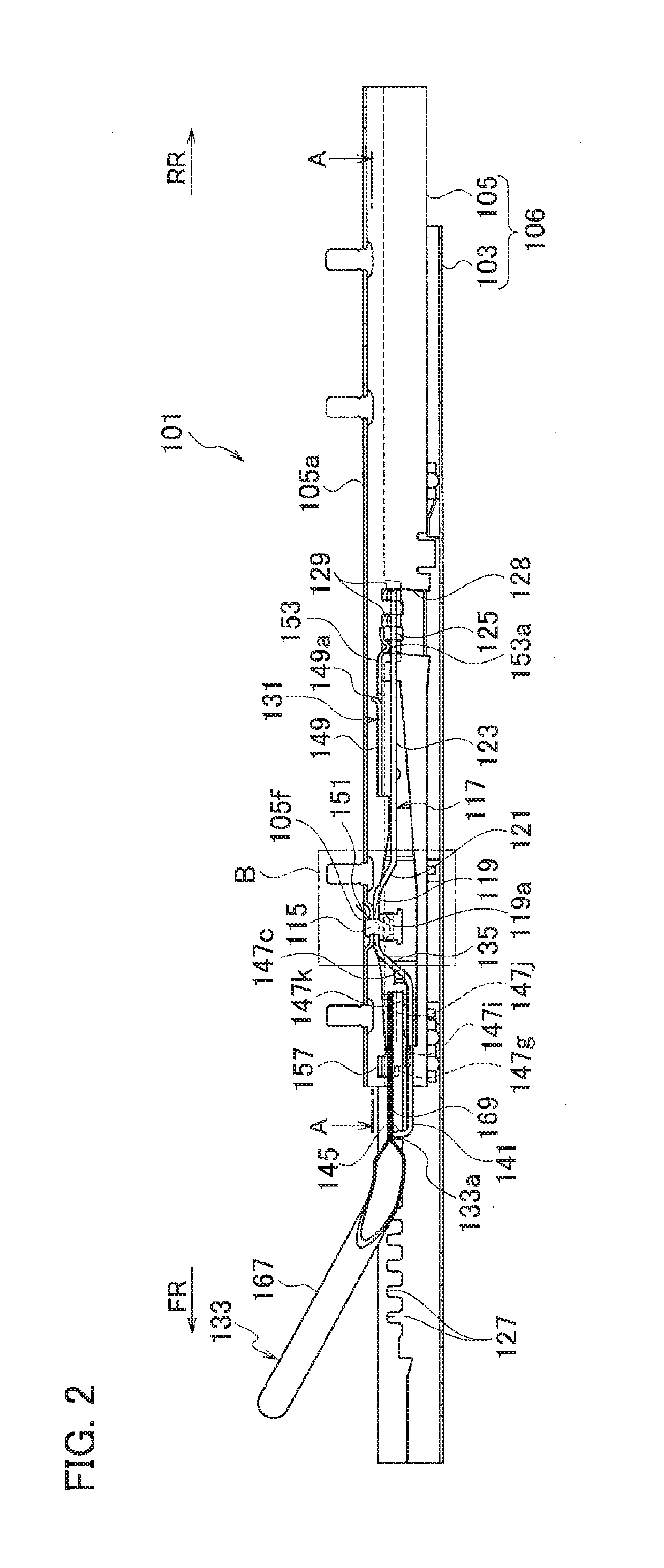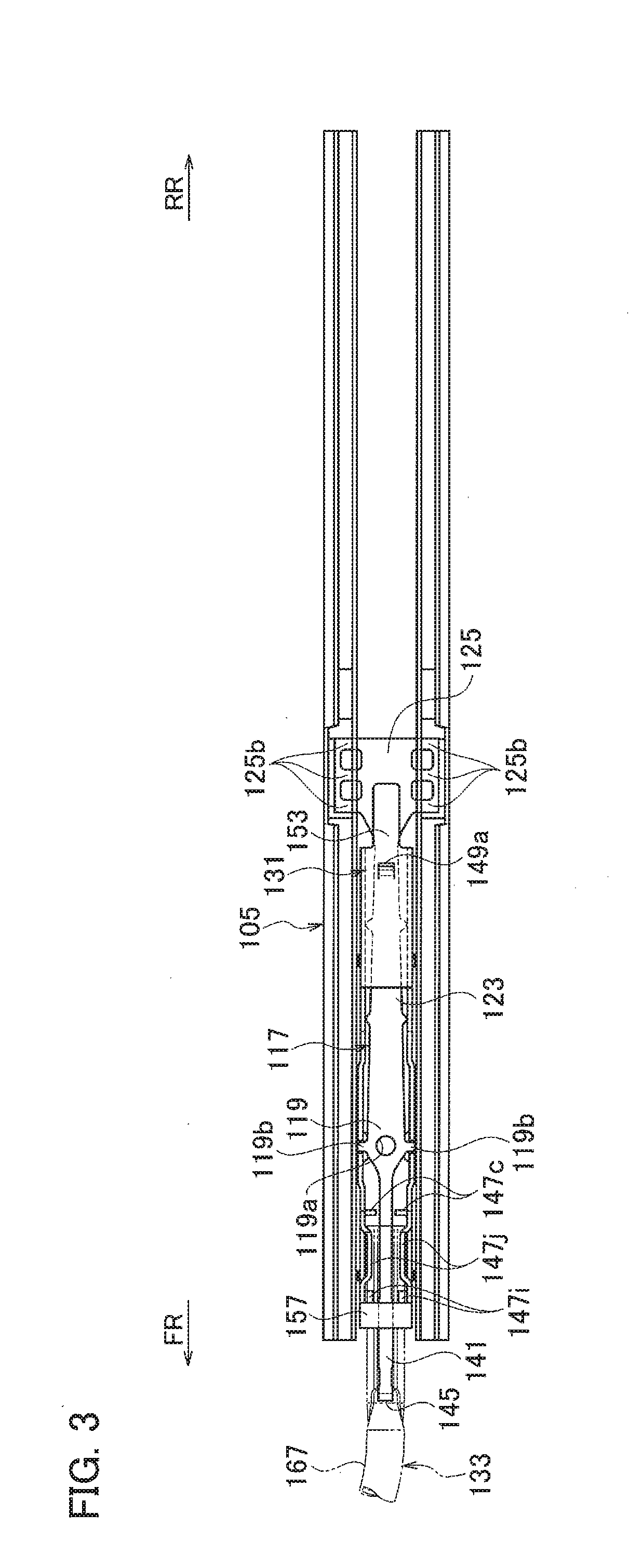Seat slide device
a seat and slide technology, applied in the field of seat slide devices, can solve the problems of increasing the number of parts, difficult to insert the two lock portions into the lock groove, and the assemblability of the seat slide devices is poor, so as to reduce the amount of deformation of the lock member and improve the lock strength
- Summary
- Abstract
- Description
- Claims
- Application Information
AI Technical Summary
Benefits of technology
Problems solved by technology
Method used
Image
Examples
first embodiment
[0053]A seat slide device 10 according to a first embodiment of the present invention illustrated in FIGS. 1 to 4 is a manual seat slide device in which the position of a vehicle seat n a front-rear direction is adjusted manually. The seat slide device 101 includes a lower rail 103 installed on a floor surface of a vehicle and extending in a vehicle front-rear direction (hereafter, simply referred to as front-rear direction in some cases) and an upper rail 105 installed on a back surface of a seating portion (not illustrated) of a seat and assembled to be movable inside the lower rail 103 relative thereto in a longitudinal direction of the lower rail 103. The lower rail 103 and the upper rail 105 form a rail body 106 and paired left and right rail bodies (a pair of rail bodies) 106 are provided. In FIGS. 2 and 3, illustration of the lower rail 103 is omitted. Note that, in the following description (including second and third embodiments), “front” is the vehicle front FR side which ...
second embodiment
[0133]FIG. 19 is a side cross-sectional view of a seat slide device 101A according to a second embodiment which corresponds to FIG. 2. The second embodiment is different from the first embodiment in some portions of the release lever 131 and some portions of the operation handle 133. The lower rail 103 and the upper rail 105 in the second embodiment are the same as those in the first embodiment.
[0134]The lock member 117 in the second embodiment has substantially the same basic shape as that in the first embodiment. However, as illustrated in FIGS. 19 and 21A, a tilted portion 141a is formed in a portion of the front elastic deformation portion 141 on the front end claw 145 side. A portion on the front tilted portion 135 side of the tilted portion 141a is a flat surface 141b. The tilted portion 141a is tilted such that a portion of the tilted portion 141a on the front end claw 145 side is located above a portion of the tilted portion 141a on the flat surface 141b side.
[0135]Next, a r...
third embodiment
[0179]A third embodiment of the present invention is described below with reference to FIGS. 1 to 18 and FIGS. 31 and 32. Since FIGS. 1 to 18 are the same as in the first embodiment, description thereof is omitted below and the description in the first embodiment is incorporated.
[0180]FIG. 31 is a plan view illustrating a state where the lock teeth 125b of the lock member 117 are in engagement with the respective lock grooves 127. FIG. 32 is a side view of the engagement state in FIG. 31 as viewed from the inner side of the right upper-rail side wall 105b of the upper rail 105 and illustration of the lower-rail bottom wall 103a of the lower rail 103 is omitted. Note that, in FIGS. 31 and 32, the three lock teeth 125b on the right side (upper side in FIG. 31) are referred to as lock teeth 125b1, 125b2, 125b3 from the front side (left side in FIG. 31) and the three lock teeth 125b on the left side (lower side in FIG. 31) are referred to as lock teeth 125b4, 125b5, 125b6 from the front...
PUM
 Login to View More
Login to View More Abstract
Description
Claims
Application Information
 Login to View More
Login to View More - R&D
- Intellectual Property
- Life Sciences
- Materials
- Tech Scout
- Unparalleled Data Quality
- Higher Quality Content
- 60% Fewer Hallucinations
Browse by: Latest US Patents, China's latest patents, Technical Efficacy Thesaurus, Application Domain, Technology Topic, Popular Technical Reports.
© 2025 PatSnap. All rights reserved.Legal|Privacy policy|Modern Slavery Act Transparency Statement|Sitemap|About US| Contact US: help@patsnap.com



